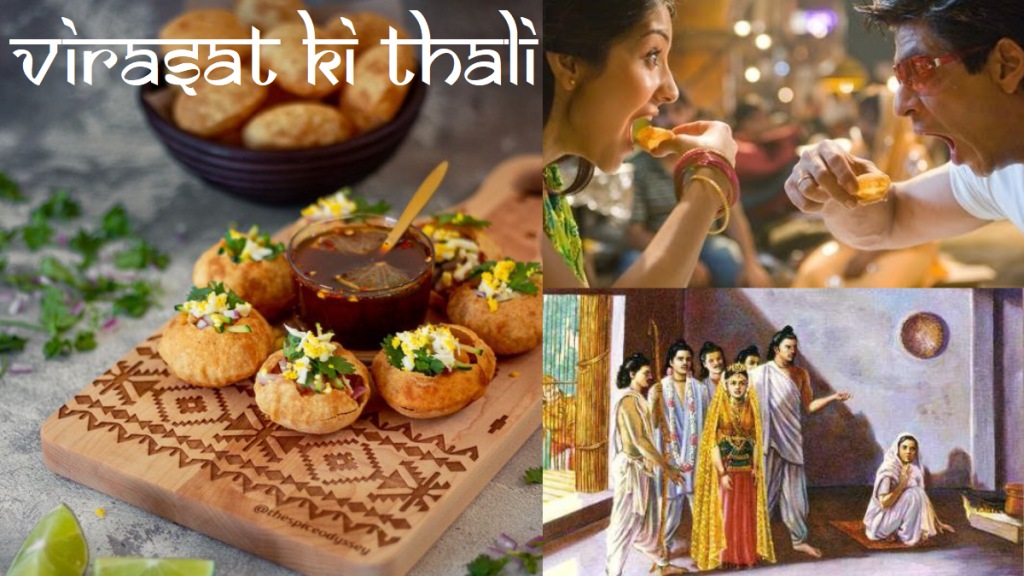Welcome to yet another edition of Virasat ki Thali-a month long series that celebrates the rich tapestry of Indian food and it’s origin because well, we know if you love the dish, you are probably interested to know about it’s origin too.
A delight that hides within its humble spheres an explosion of flavors waiting to dance on your taste buds. Can you guess what I’m talking about? Hint: it’s crispy, tangy, and oh-so-irresistible. Yes it’s our favourite Pani Puri-the queen of Chaat or gup chup whatever you call it. Just the mere mention of its name can evoke an orchestra of memories – the streets, the joyous laughter, and the sheer delight of that first bite.
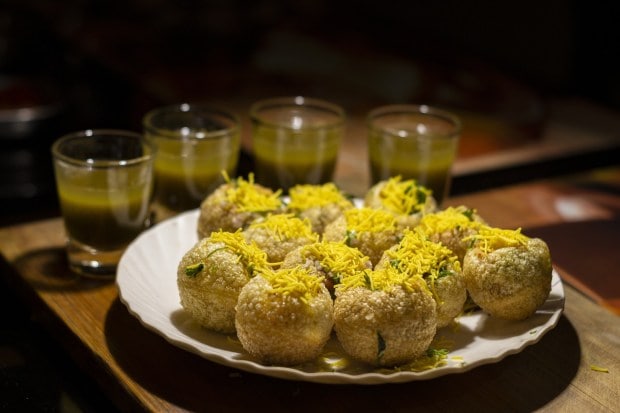
With the plate in hand, waiting for the Pani puri wale bhaiya to serve you one in weddings to eating to you mouth full and not being able to keep with the pace with the Pani puri wale bhaiya on streets; Pani puri isn’t just a dish; it’s an emotion, an experience, and an emblem of the vibrant culinary tapestry that India boasts. Join me on this flavorful journey as we unravel why this iconic treat has captured the hearts of millions worldwide.
Known by myriad names like Gol Gappe, Phuchka, Pani ke Batashe, and more, this crispy delight holds a special place in every Indian’s heart and taste buds.
A Bite into history: Where legends and flavors collide
Originated in Magadha
Imagine a crispy, hollow sphere, filled with the perfect blend of spicy potato goodness, and submerged in an aromatic concoction of jal jeera and meetha chutney – that’s the enchanting Pani Puri for you. But where did this magical treat originate?
Chaat, with its origin in North India, paved the way for the evolution of Panipuri/Gol Gappa. The culinary anthropologist Kurush Dalal sheds light on the fact that Gol Gappa likely emerged from the larger Raj-Kachori, leading to its diminutive form. Panipuri’s journey across India can be attributed to the 20th-century migration of people between regions.
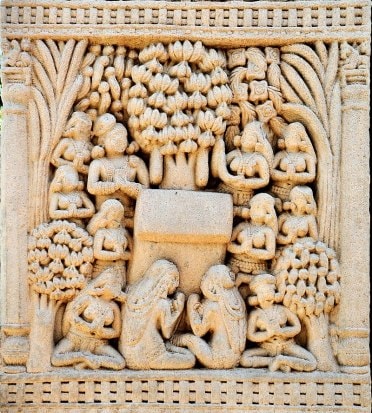
In the historic kingdom of Magadha, along the banks of the Ganges, an early form of Pani Puri known as ‘Phulki’ existed. These miniature, crispier puris were akin to the modern-day Pani Puri. Although the exact filling remains a mystery, the influence of aloo sabzi (potato curry) is likely.
Draupadi created Pani-puri
Another captivating origin story takes us back to the pages of the Mahabharata, where Draupadi’s culinary genius shines. It is said that Kunti gave a challenge to her daughter in law, to feed her sons with food made out of scratch. Draupadi, being the iconic and intelligent women she was, while in exile, transformed leftover aloo sabzi and dough into the delectable Pani Puri. Legend has it that her innovation earned this dish the blessing of immortality from her mother-in-law, Kunti.
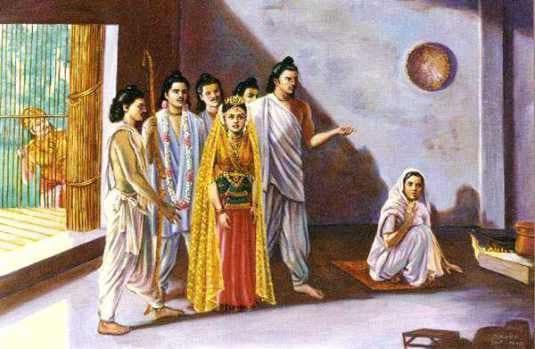
A melting pot of names: Pani Puri by region
The diversity of India finds its reflection in the myriad names of Pani Puri across the country. While the roots of this delectable delicacy have yet to be established with historical accuracy, one thing is certain: pani puri travelled across India and made the country fall head over heels in love with it. The combinations changed dramatically over time as each region evolved its own version based on its tastes.
- Gol gappe- New Delhi, Punjab, Jammu & Kashmir, Haryana, Madhya Pradesh and Himachal Pradesh.
- Puchka-Bihar, Jharkhand and West Bengal.
- Pakodi-interior parts of Gujarat and Madhya Pradesh
- Padaka- Aligarh
- Gup-chup-Odisha, parts of Bihar, Jharkhand Chhattisgarh, Hyderabad, and Telangana.
- Pani ke patashe- Uttar Pradesh
- Patashi- Central India, including parts of UP and Rajasthan
- Tikki-Hoshangabad in Madhya Pradesh
- Phulki-Uttar Pradesh, Gujarat and Nepal
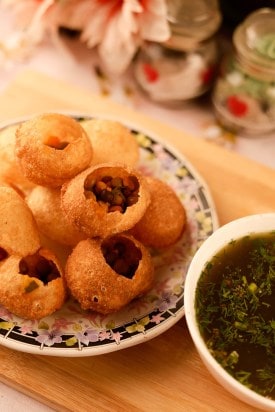
Pani puri- The homegrown red flag detector
Wait let me explain you. Eating pani puri can be a tad bit messy, you many splatter your clothes a tad bit. If your date refuses to go for pani puri date at the first place, a big red flag, or if they judge you while eating it, raise their eyebrows, run away, major red flag incoming!

The sizzle of Pani Puri isn’t limited to street corners; it also graces the silver screen. Countless movies and TV shows have depicted Pani Puri-eating scenes that beautifully capture the chemistry between actors. Remember the battle of pani puri eating between Shah Rukh Khan and Anushka Sharma in Rab ne bana di jodi?

Google doodle celebrated Pani Puri
Google Doodle celebrated Pani Puri by presenting an interactive Pani Puri game. Notably, on this day in 2015, a restaurant in Indore, Madhya Pradesh set a world record by presenting 51 different types of pani puri.
How to make a pani puri
Preparing the delightful pani puri is an engaging endeavor. To commence this culinary affair, concoct a spirited elixir by blending tamarind, mint, cumin, chaat masala, and a touch of chili. This forms the invigorating pani. Now, procure the dainty, hollow puris and, with finesse, gently tap a minuscule hole in their crowns. Fill each with sprouted moong beans and diced potatoes, perhaps a drizzle of zesty chutney for good measure. Finally, submerge these filled puris into the pani, allowing them to absorb the flavors.
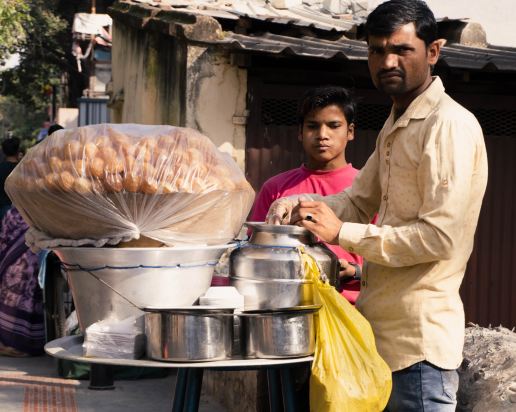
Where to get the best Pani puris in town?
Whether you’re in Delhi or Maharashtra, Gujarat or Karnataka, the variations are endless. Ragda or moong, onions or chutneys – each region adds its touch to this timeless creation, making every bite a unique delight.
Here are some places that serves the best Pani puri
Delhi– Chote Lal Chaat Bhandar at Chawri Bazaar, Shyam Chat Bhandar at GTB nagar, Padam Chaat Corner at Chandni Chowk
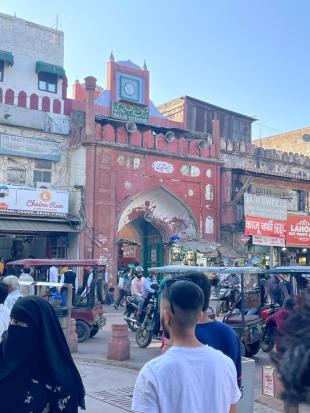
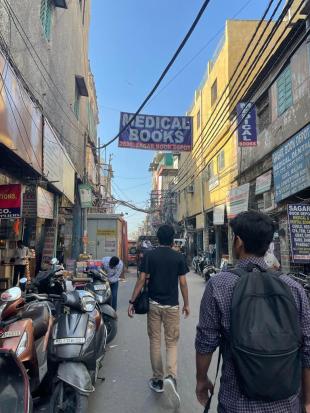
Mumbai– Elco, Punjab Sweet House, Sea Lounge, Ram Shyam Bhelwala
Jaipur– Tapri
Kolkata: Phuchka stall outside Victoria Memorial
As we relish the tangy tamarind water, the spicy potatoes, and the crispy puris, we’re reminded that the origins of this cherished snack might be shrouded in mystery, but its ability to unite and delight is undeniable.

In the grand tapestry of Indian cuisine, Pani Puri shines as a vibrant thread, connecting regions, people, and stories. So, the next time you savor a plate of Gol Gappe or Phuchka, remember that you’re not just indulging in a snack – you’re partaking in a centuries-old legacy that brings India’s flavors and cultures together, one delectable bite at a time.

